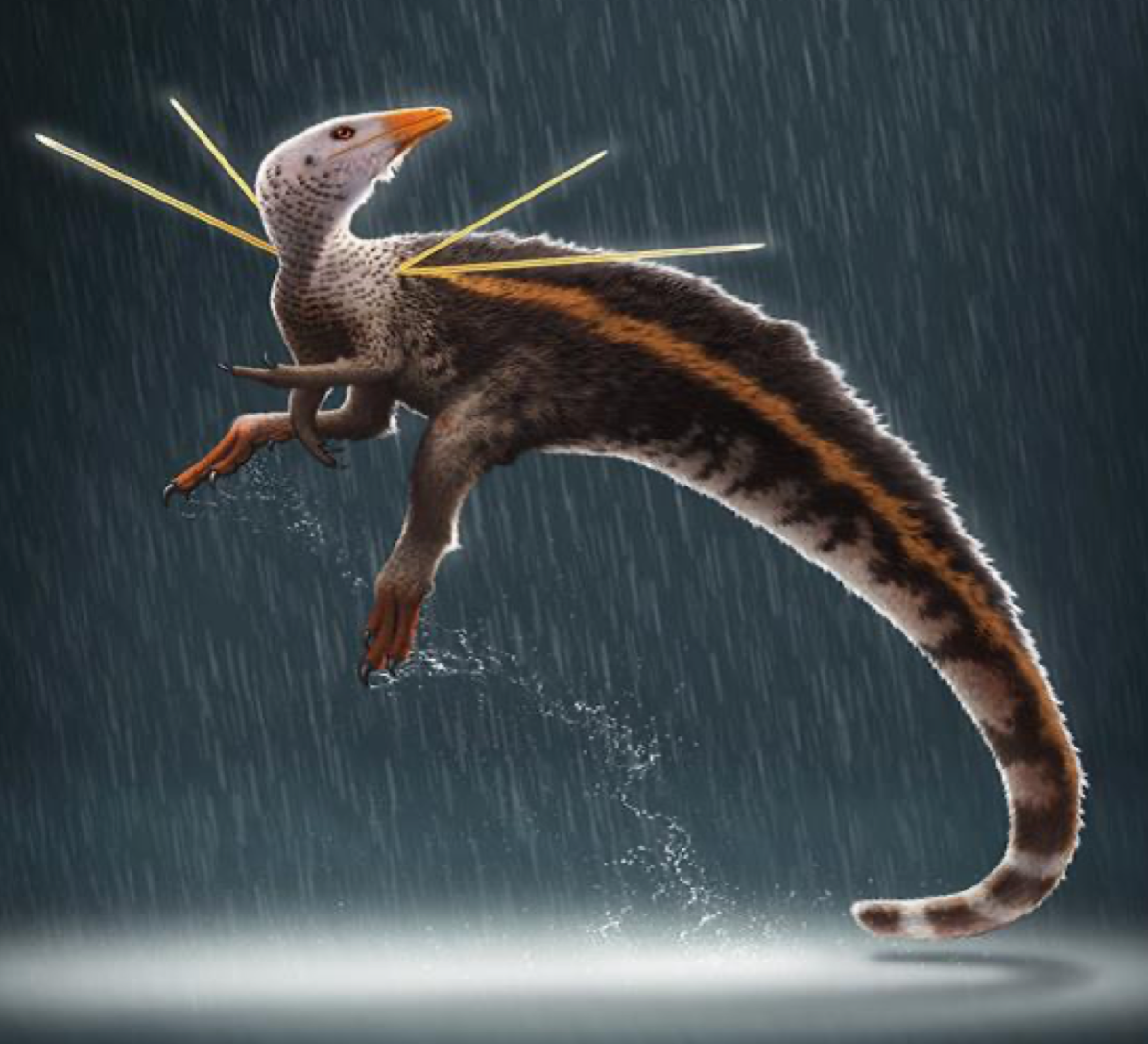It Showed Descendants How To Dress To Impress
Scientists have found a section of a long, thick mane running down an animal’s back preserved nearly intact between rocks from Brazil. It was the fossil of a non- avian dinosaur that lived 110 million years ago in the Southern Hemisphere.
The animal was chicken-sized with a spectacular mane with a fur-like texture and a pair of stiff, ribbon-like streamers emerging from both shoulders. These extravagant features must have been used by them to attract mates or ward off rivals. The species was named Ubirajara jubatus (Ubirajara means “Lord of the spear” in the local Tupi language, while jubatus means “maned” or “crested” in Latin).
Scientists say that it must have showed its descendants how to dress to impress. This sheds new light on how birds such as peacocks inherited their ability to show off.

jubatus
Credits:
Bob Nicholls/Paleocreations.com 2020

